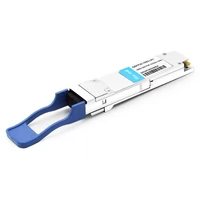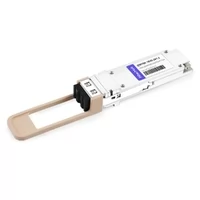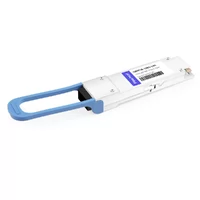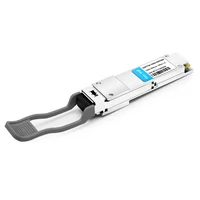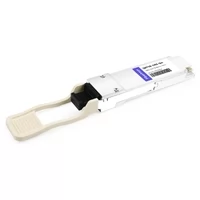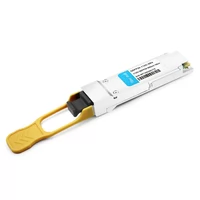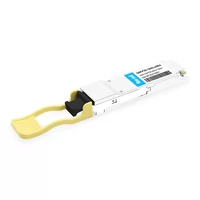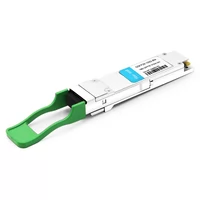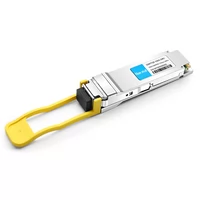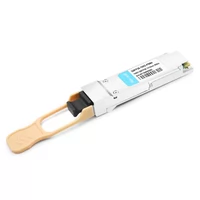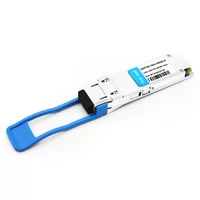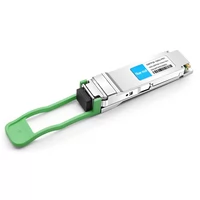The term “high-speed data transfer” is hot in many industries and business models. In particular, 100G Ethernet has become increasingly important for enterprise networks, data centers, and cloud computing environments. This article will give an overview of 100G Ethernet, including its principles, technical specifications, and use cases in modern networking. It will also cover the benefits that come with this technology adoption, the different standards available, and considerations for implementation. This guide is suitable for IT professionals or anyone wanting to learn more about networking; it provides all the necessary information to understand what 100G Ethernet means and how it works.
Table of Contents
ToggleWhat is 100g Ethernet?

Defining 100g Ethernet
100G Ethernet is a networking standard that transmits data at 100 gigabits per second (Gbps). The Institute of Electrical and Electronics Engineers (IEEE) defined it through various standards, including IEEE 802.3ba and IEEE 802.3bm. This technology was created to support the growing bandwidth requirements for modern applications like data center operations on a large scale, video streaming, and cloud computing, among others. It enables efficient high-capacity communication over copper or optical fiber infrastructure by using advanced techniques such as wavelength division multiplexing (WDM) and parallel optical interfaces, which greatly improves network performance while increasing its scalability.
Importance of 100g Ethernet in Modern Networks
Modern networking makes it difficult to emphasize the importance of 100G Ethernet. The need for higher bandwidth and lower latency becomes critical as data traffic continues to surge due to cloud computing, big data analytics, and high-definition video streaming applications. Utilizing fiber optic infrastructure, 100G Ethernet provides a robust and scalable solution that can support rapid influx of data. Moreover, this technology improves network efficiency by reducing energy consumption per gigabit transferred, which is very important in large-scale operations where operational costs are a concern. Also, the adoption of 100G Ethernet ensures seamless interconnectivity between different segments of networks, thereby enabling enterprises to maintain high performance levels in their communication infrastructure. Organizations find it easy to transition because it is aligned with existing standards, making it an attractive choice for future-proofing their networking capabilities.
How 100g Ethernet Works
The 100G Ethernet operates using physical layer technologies and protocols for high-speed data transmission. Either optical or electrical signals usually provide the necessary bandwidth. Optical implementations of 100G Ethernet use wavelength division multiplexing (WDM). WDM divides multiple data streams into different light wavelengths, allowing them to travel together over one optical fiber. This greatly increases capacity without more infrastructure.
On the other hand, 100G Ethernet can use electrical technologies like 100GBASE-SR4 and 100GBASE-LR4. Multi-mode fibers are used in this short-range connection technology, while single-mode fibers are used in the long-distance capable version, which is designed for longer distances. According to IEEE 802.3 standards, ethernet frames encapsulate data packets, ensuring that they work with current networking equipment and the standard for 100 GbE. These technologies cooperate to allow fast reliable data flow needed by today’s networks.
How Does 100g Ethernet Compare with Gigabit Ethernet?

Speed Differences Between 100g and Gigabit Ethernet
The main difference between 100G Ethernet and Gigabit Ethernet is the speed at which they transfer data. While Gigabit Ethernet operates at 1 gigabit per second, 100G Ethernet can transmit information at a staggering rate of 100 gigabits per second – that’s one hundred times faster! This drastic increase in pace allows for more substantial data management and expedites efficiency in high-demand scenarios like data centers, cloud computing, or multimedia streaming. Additionally, it offers increased bandwidth to meet the needs of today’s businesses while providing low-latency connectivity compared to its predecessor.
Latency Considerations
When it comes to network systems, latency is a key performance indicator. This is particularly true when comparing 100G Ethernet and Gigabit Ethernet. Generally speaking, 100G Ethernet has lower latency than its slower counterpart because of improved packet processing and faster data transmission. Lower latencies are essential for real-time applications like online gaming or financial trading where every millisecond counts during video conferencing as well. In addition, changes in switch design can be made within the architecture of 100G networks that will help reduce delays caused by routers as well, so high-speed connections do not only need to send information quickly but also require immediate responses from users who might be playing games under such circumstances all day long without needing any sleep at night!
Data Transfer Rates and Performance
When it comes to network systems, data transfer rates are the most important factor. For instance, comparing 100G Ethernet and Gigabit Ethernet in terms of their performance would be an ideal example. 100G Ethernet has a throughput speed of 100 gigabits per second while Gigabit Ethernet can only push through 1 gigabit per second. This means that the former is faster by one hundred times which translates to quicker data exchange and better ability to handle high-bandwidth applications. Therefore, financial services firms, research centers, and media production companies are some examples of where this kind of technology would work best since they require fast access to large amounts of information. Furthermore, higher transfer speeds lead to improved traffic control with less congestion within the networks, thereby increasing efficiency and reliability overall. Consequently, all organizations using such infrastructure should expect superior performance from their connected applications and be able to scale up according to rising demand for storage space over time.
What are the Key Components of 100g Ethernet?
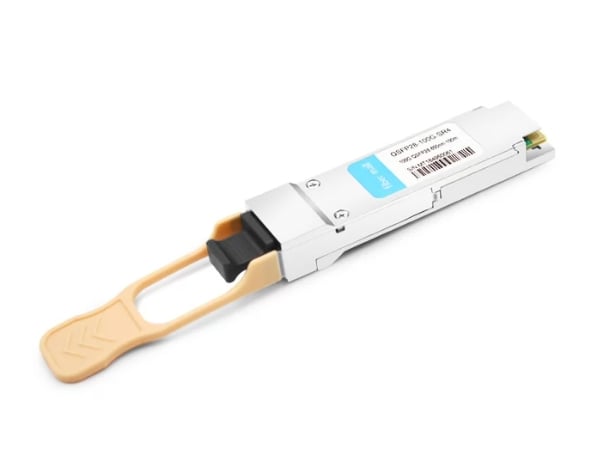
Network Interface Cards (NICs)
100G Ethernet systems rely on Network Interface Cards (NICs) as essential components, which connect the network and the computing device. They allow for data transmission and reception by transforming digital information from a device into signals that can travel through a network. NICs in this context must be able to process very high speeds of 100 gigabits per second with low latency – critical for real-time applications. To improve performance further and facilitate efficient handling of network traffic, they also include advanced features such as offload capabilities and multi-protocol support.
Ethernet Adapters
Ethernet adapters are essential in 100G Ethernet networks since they connect devices and communication lines through network cards and backplanes. These adapters can transfer data at a speed of 100 gigabits per second and have advanced technology to reduce latency while maximizing throughput. SFP28, QSFP28, and CFP4 are some of the interfaces supported by these adapters as they allow compatibility with different network architectures. Additionally, ethernet adapters take into account various needs for particular applications, which ensures smooth integration within a 100G environment, thereby guaranteeing optimal performance that conforms to the standard of 100 GbE.
Cables and Transceivers
In 100G Ethernet deployments, cables and transceivers are critical components that enable high-speed data transfer across different distances and environments. Multi-mode and single-mode optical fibers are the most popular cabling solutions employed in 100G networks to meet the requirements of high bandwidth. Electrical signals are converted into optical signals by transceivers, which come in various form factors such as SFP28, QSFP28 and CFP4. These types of transceivers provide reliable connections over long distances with specifications that minimize signal loss while ensuring efficient thermal management needed to maintain the integrity of data transmission at a rate of 100 gigabits per second.
How to Implement 100g Ethernet in Existing Networks?

Upgrade Path for Existing Ethernet Networks
A systematic upgrade path must be established for existing networks to use 100G Ethernet. Assess the current network infrastructure comprehensively; this includes switches, routers, and cabling. This will help identify possible bottlenecks that may need improvement. Afterward, a suitable 100G Ethernet switch will be bought to support the required protocols and interfaces. The next step is to check the cabling system and replace copper cables with appropriate multimode or single-mode optical fiber where necessary to accommodate higher bandwidths. Use transceivers compatible with new hardware, ensuring they meet specifications for optimal performance over desired distances. Lastly conduct extensive testing during upgrades so as to ensure network reliability and efficiency then monitor post implementation metrics continuously in order fine tune configurations while guaranteeing seamless integration of all components into one cohesive unit.
Compatibility Issues and Solutions
When upgrading to 100G Ethernet, there can be compatibility issues between old devices and new hardware like network cards or backplanes. Supported protocols, port density, and cabling infrastructure are common problems during this process. To mitigate these risks, it is important to ensure all new switches and routers can interface with existing devices by checking support for different Ethernet standards. Use media converters where necessary to bridge the gap among various transmission technologies, for cabling use high-quality multi-mode or single mode fibre which meets/exceeds required specifications for100G transmission. In addition, maintaining clear documentation about the current ecosystem will help track component compatibilities, thus enabling smooth integration processes involving integrated 100GE solutions over time as. Well periodic firmware updates are carried out together with device configuration changes aimed at minimizing possible operational conflicts while the network keeps evolving around us.
Cost Considerations
When it comes to upgrading to 100G Ethernet, the cost can be large and greatly varies depending on what is already in place as well as the requirements of different organizations. Important considerations for costs include purchasing switches and routers that are compatible with 100G, transceivers, and high-quality cabling. Besides this, companies also have to factor in installation costs as well as configure them for use by their technical staff, who may require training on how these work. It’s wise to budget for possible downtime during the transition period since there might be a loss of productivity temporarily. To cut down on expenses though, a thorough cost-benefit analysis should be done by organizations where areas identified can involve using legacy equipment instead of replacing everything completely or even upgrading some parts only if necessary at all times throughout implementation processes like higher speed solutions such as 100G Ethernet which would help mitigate overall expenditure while achieving desired network performance outcomes especially when implementing such things.
What are the common challenges and solutions to using 100g Ethernet?
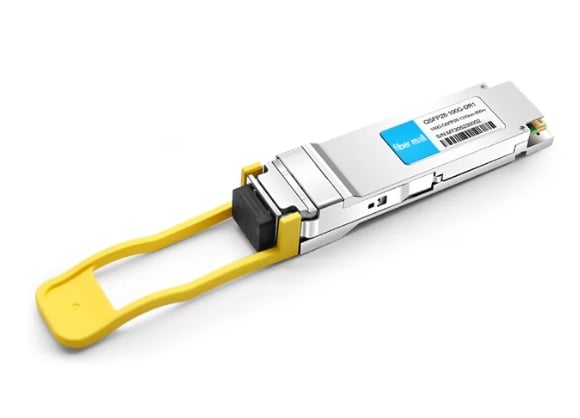
Managing Low Latency Requirements
Ensuring low latency in a 100G Ethernet environment is very important for performance-sensitive applications. Network congestion, inefficient hardware configurations, and unoptimized routing are typical problems. One of the approaches to deal with this problem includes using quality-of-service (QoS) protocols to give priority to traffic whose latency is critical. Other methods include optimizing network topologies to decrease hop counts and using high-performance switches that support low-latency operations. Regularly monitoring network parameters and adjusting them can help maintain compliance with latency standards, improving overall performance and user satisfaction.
Dealing with High Data Rate Requirements
In a 100G Ethernet environment, high data rate requirements pose problems like bandwidth bottlenecks, inadequate infrastructure and scalability limits. Some solutions are using better optical transceivers to support more data rates, applying link aggregation methods to increase throughput by merging different connections, and ensuring the backbone infrastructure, such as cabling or switches, can efficiently handle 100G traffic. Also, using Multi-Protocol Label Switching (MPLS) technology helps manage data transmission better while making the most out of network bandwidth.
Ensuring Network Reliability and Performance
Organizations must consider many important factors to ensure network reliability and performance in a 100G Ethernet environment. Redundancy protocols such as the Rapid Spanning Tree Protocol (RSTP) or Multiple Spanning Tree Protocol (MSTP) should be implemented to prevent network failures and enhance fault tolerance. In addition, security and performance are improved by regularly updating software and maintaining firmware for network devices, including those that use fiber optic connections. Using strong monitoring tools that track the network’s health and monitor performance metrics helps identify and resolve issues before they become serious problems. Finally, clear service level agreements (SLAs) with service providers should be established to ensure accountability on both sides while setting performance expectations that will lead to a more reliable infrastructure overall.
What is the Future of 100g Ethernet?
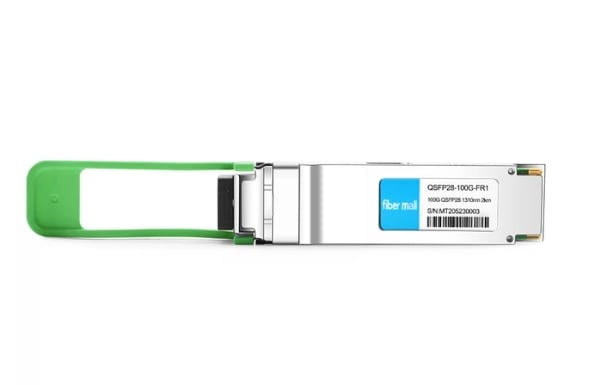
Trends in Network Infrastructure
Emerging trends in networking hardware influence the future of 100G Ethernet. Adoption of the 100 GbE standard and usage of 25.78125 Gbps lanes are among such trends. One such trend is cloud computing and virtualization, which require high-speed scalable connections due to increased data traffic. There are also other factors involved in this shift; for example, organizations need to accommodate massive data flows because of IoT devices that have proliferated over time. In fact, these gadgets demand lower latency solutions with higher bandwidth capacities than what existing technologies can provide.
On top of all that, there’s software-defined networking (SDN) as well as network function virtualization (NFV). These allow organizations to be more flexible and agile when it comes to adapting their systems according to changing requirements within a given telecommunications environment. Enhanced optical transport networks (OTN) facilitate better handling capabilities at reduced operational costs while increasing efficiency levels even further still – not just on our own behalf but yours too! Finally we must mention sustainable development practices which are becoming ever more important so as not only meet current needs without compromising future generations’ ability do likewise but also introduce energy-saving innovations along the way towards greener ecosystems overall! Together, they suggest significant changes will occur throughout various types of infrastructure designed specifically for increased capacity utilization coupled with greater efficiency gains per unit area used up by different kinds of equipment employed therein in the most environmentally friendly manner possible under prevailing circumstances wherever located worldwide today, tomorrow, always forevermore amen!
Advancements in 100g Ethernet Technology
The focus of recent developments in 100G Ethernet technology has been on enhancing transmission efficiency, lowering costs, and improving general performance. One significant development is the introduction of Parallel Optical Transmission, which uses several parallel channels to boost bandwidth. In addition, new modulation techniques like Pulse Amplitude Modulation (PAM4) allow for higher data rates over current fiber optic infrastructure. For data centers and enterprise networks, specialized transceivers such as 100G QSFP28 have been developed to provide compact and cost-effective solutions that further facilitate the adoption of 100G Ethernet. Also, improved error correction methods and optical amplification have ensured reliable high-speed connectivity by contributing to better signal integrity and extended transmission distances. These technological advancements jointly make 100G Ethernet a key component in modern network infrastructure, which meets growing demands for data throughput and efficiency while often exceeding the capabilities of older 10G infrastructures.
The Role of IEEE and Other Standards Bodies
The Institute of Electrical and Electronics Engineers (IEEE) is pivotal in creating standards that regulate Ethernet technologies, including 100G Ethernet. More specifically, the IEEE 802.3 working group makes and maintains standards that specify physical layer specifications and data formats for different devices from various manufacturers to work together. Other organizations, such as the International Telecommunication Union (ITU) and the Internet Engineering Task Force (IETF), also come up with guidelines for global communication interoperability among their members. As a result, they can work together toward addressing new technological advancements or market demands while ensuring that these standards keep pace with changes in network infrastructure over time. Standard bodies like this one carry out extensive research before developing any standard, so it can be useful in solving modern networking problems efficiently without wasting resources on unreliable solutions that may not scale well under heavy loads of traffic due to their inability to cope with high speeds required by next-generation networks where everything will be connected all the time at very low latency levels due to proximity between end users’ devices which could be located anywhere around the world within milliseconds apart physically but still have instantaneous responses because of quantum entanglement effects making it possible for two particles separated by large distances beyond our current understanding ability level thus enabling true universal computing capabilities beyond anything we’ve ever seen before!
Reference Sources
Frequently Asked Questions (FAQs)
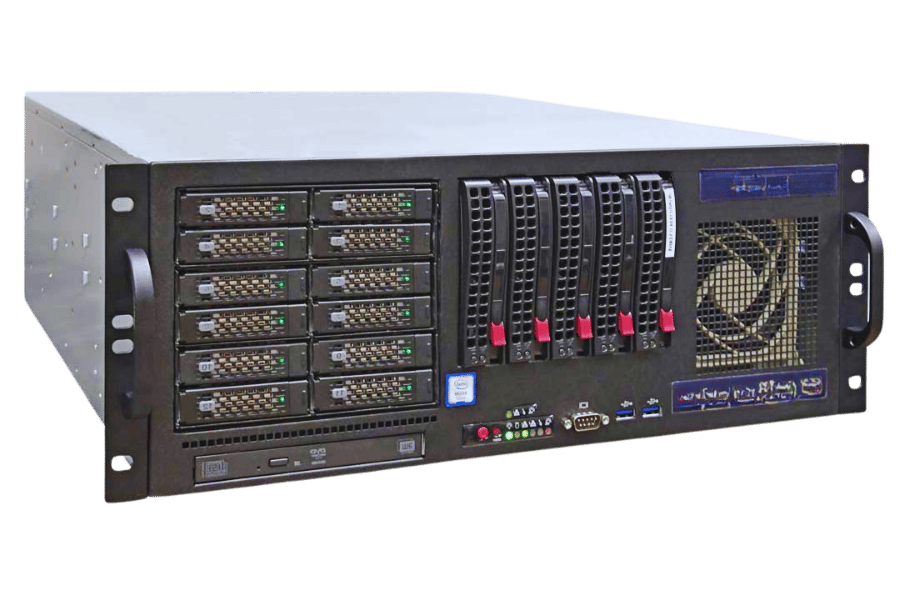
Q: What exactly is 100 gigabit ethernet?
A: 100 gigabit ethernet, commonly referred to as 100 GbE or 100 Gbps ethernet, is a high-speed network technology designed to transmit data at speeds of up to one hundred gigabits per second. It is extensively used in data centers and enterprise networks where higher bandwidth and rapid information transfer are needed.
Q: What distinguishes 100-gigabit from ten-gigabit and forty-gigabit?
A: Regarding performance and capacity, the difference between hundred Gbps Ethernet on the one hand and ten Gbps or forty Gbps Ethernet on the other cannot be overstated. Ten Gigabit Ethernet offers maximum throughput rates of only about ten Gbps while Forty Gigabit Ethernet can go as fast as forty Gbps; however, Hundred-Gig will reach speeds around one hundred bps, making it suitable for use within HPCs (high-performance computing) environments including large-scale data centers.
Q: Can you list some common uses for this type of Ethernet?
A: This kind of ethernet is often used when transferring large amounts of data quickly between different servers located in a single datacenter such as those found in high-performance computing clusters connected via service provider backbone networks leading into very high volume storage system interconnects due its ability to efficiently handle massive datasets generated by these systems.
Q: Why is the evolution of 100gb e so important?
A: The significance behind developing new standards like IEEE8023ba, which introduced faster speeds beyond previous versions such as ieee8023ae/j/bk, represents continuous improvements made over time within ethernet technology aimed at meeting ever-increasing requirements related not just towards faster transfer rates but also greater available bandwidth capacity needed more broadly across wider areas than before thus allowing modern infrastructure upgrades resulting lower latencies improved overall performance levels critical support future use cases involving increasingly data-hungry applications now becoming ubiquitous everywhere we look today tomorrow next week month year decade century millennium forever!!
Q: What are the different technologies that contribute to creating this type if ethernet connection?
A : There are several key components involved in building out an effective 100GbE solution, including PHY devices, optical transceivers used lane distribution CAUI-4 interfaces, RS-FEC forward error correction, etc. Together they help ensure long-distance transmission efficiency reliability over high-speed interconnects between multiple devices within any given data center environment where hundreds of thousands, possibly even millions, should be able to communicate seamlessly without bottlenecks anywhere along the route taken packets traveling back and forth constantly all day every day until power off switch flipped nighttime bedtime stories told little ones tucked sleep tight don’t let bedbugs bite 😉
Q: How does 100 gigabit ethernet handle errors during data transmission?
A: RS-FEC is a type of forward error correction (FEC) used in the 100 gigabit ethernet to detect and correct errors. This minimizes the effects that high-speed network transmissions have on data integrity and reliability.
Q: What role does 100g Mac play in 100-gigabit ethernet?
A: Without managing data frames, access control over physical transmission mediums, and proper encapsulation/decapsulation of information at the destination end, there can be no efficient functioning of a hundred gigabit Ethernet (GbE) networks by media access control (MAC) layers.
Q: What are the benefits of using low latency 100g ethernet intel® solutions?
A: A solution based on low latency Intel®-controlled Ethernet-100G will yield improved packet processing speed and reduce overall network delays among other benefits. These types of solutions are ideal for use in cloud computing, high-frequency trading, and any other application that requires very high throughput with minimal delay.
Q: How does 100 gigabit ethernet support high-speed data transfer rates?
A: To achieve sustained rates of up to one hundred bits per second, or more precisely Bps (bits per second), this system may utilize various advanced technologies such as optimized optical transceivers, multi-lane distribution, or high-frequency PHY components to enable it to operate at extremely fast speeds, where large amounts of information need to be transferred quickly across different locations within a short time frame.
Q: Is 100-gigabit ethernet backward compatible with older Ethernet standards?
A: Indeed, backward compatibility between different generations of Ethernet technology is guaranteed through its ability to integrate seamlessly into existing networks built using previous versions like 10GE or 40GE while allowing organizations upgrade their infrastructure without replacing everything from scratch since it supports all these standards simultaneously along with many others which makes things easier for everyone concerned about compatibility issues when upgrading their equipment due mainly because not having enough funds available at once might force them do so gradually over some time instead just investing heavily upfront could lead financial ruin if done carelessly without considering alternatives first before making final decisions regarding what course action take next after realizing there’s something wrong somewhere else entirely different than originally thought possible initially based solely upon appearances alone without conducting further research into matter beforehand so please always remember think carefully before acting impulsively otherwise you may regret later on down road somewhere far away from home where nobody knows your name anymore let alone wants anything do with you ever again!
Related Products:
-
 QSFP28-100G-LR1 100G QSFP28 Single Lambda LR 1310nm 10km LC SMF with FEC DDM Optical Transceiver
$265.00
QSFP28-100G-LR1 100G QSFP28 Single Lambda LR 1310nm 10km LC SMF with FEC DDM Optical Transceiver
$265.00
-
 QSFP28-100G-SR1.2 Single Rate 100G QSFP28 BIDI 850nm & 900nm 100m LC MMF DDM Optical Transceiver
$280.00
QSFP28-100G-SR1.2 Single Rate 100G QSFP28 BIDI 850nm & 900nm 100m LC MMF DDM Optical Transceiver
$280.00
-
 QSFP28-100G-LR4 100G QSFP28 LR4 1310nm (LAN WDM) 10km LC SMF DDM Transceiver Module
$285.00
QSFP28-100G-LR4 100G QSFP28 LR4 1310nm (LAN WDM) 10km LC SMF DDM Transceiver Module
$285.00
-
 QSFP28-100G-SWDM4 100G QSFP28 SWDM4 850nm-940nm 100m LC MMF DDM Optical Transceiver
$300.00
QSFP28-100G-SWDM4 100G QSFP28 SWDM4 850nm-940nm 100m LC MMF DDM Optical Transceiver
$300.00
-
 QSFP28-100G-SR4 100G QSFP28 SR4 850nm 100m MTP/MPO MMF DDM Transceiver Module
$40.00
QSFP28-100G-SR4 100G QSFP28 SR4 850nm 100m MTP/MPO MMF DDM Transceiver Module
$40.00
-
 QSFP28-112G-SR4 112G OTU4 QSFP28 SR4 850nm 100m MTP/MPO MMF DDM Transceiver Module
$50.00
QSFP28-112G-SR4 112G OTU4 QSFP28 SR4 850nm 100m MTP/MPO MMF DDM Transceiver Module
$50.00
-
 H3C QSFP-100G-eSR4-MM850 Compatible 100G QSFP28 eSR4 850nm 200m on OM3/300m on OM4 MTP/MPO MMF DDM Transceiver Module
$75.00
H3C QSFP-100G-eSR4-MM850 Compatible 100G QSFP28 eSR4 850nm 200m on OM3/300m on OM4 MTP/MPO MMF DDM Transceiver Module
$75.00
-
 QSFP28-100G-IR4 100G QSFP28 IR4 1310nm (CWDM4) 2km LC SMF DDM Transceiver Module
$110.00
QSFP28-100G-IR4 100G QSFP28 IR4 1310nm (CWDM4) 2km LC SMF DDM Transceiver Module
$110.00
-
 QSFP28-100G-DR1 100G QSFP28 Single Lambda DR 1310nm 500m LC SMF with FEC DDM Optical Transceiver
$180.00
QSFP28-100G-DR1 100G QSFP28 Single Lambda DR 1310nm 500m LC SMF with FEC DDM Optical Transceiver
$180.00
-
 QSFP28-100G-PSM4 100G QSFP28 PSM4 1310nm 500m MTP/MPO SMF DDM Transceiver Module
$180.00
QSFP28-100G-PSM4 100G QSFP28 PSM4 1310nm 500m MTP/MPO SMF DDM Transceiver Module
$180.00
-
 Huawei QSFP-100G-eCWDM4 Compatible 100G QSFP28 eCWDM4 1310nm 10km LC SMF DDM Transceiver Module
$200.00
Huawei QSFP-100G-eCWDM4 Compatible 100G QSFP28 eCWDM4 1310nm 10km LC SMF DDM Transceiver Module
$200.00
-
 QSFP28-100G-FR1 100G QSFP28 Single Lambda FR 1310nm 2km LC SMF with FEC DDM Optical Transceiver
$215.00
QSFP28-100G-FR1 100G QSFP28 Single Lambda FR 1310nm 2km LC SMF with FEC DDM Optical Transceiver
$215.00

